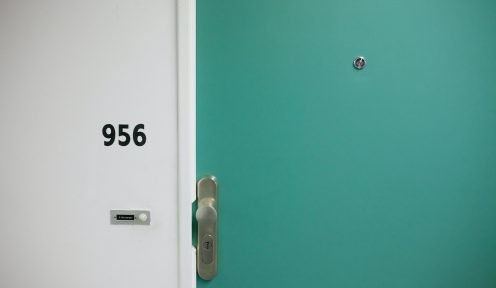
23.06.2020
15 questions with answers on minimum living income (IMV). RD 20/2020 of 29th May
In this article, the minimum living income (IMV) requirements are analysed schematically.
 Por
Osa Otero, Sandra
Por
Osa Otero, Sandra During these 13 weeks of state of alarm, we have incorporated into our daily life many previously unknown concepts. Elisa has gone from being a famous Beethoven trifle to an antibody test. You handle seroconversions and seroprevalences as if we were advanced epidemiologists.
And, whether we are lawyers or not, we have visited the BOE at least once during this pandemic. And, the thing is that there have been tens (if not hundreds) of legal provisions of all ranks dictated by the government. Regulating not only the escalation and de-escalation, but also the economic misery that the virus has brought with it. Many of them have been the subject of analysis in this very forum. The last one we are going to analyse in this article is one that, although it does not sin of originality, let’s hope it is useful.
In a BOE of more than 40 pages, with an extensive exposition of motives, as it is usual. The minimum living income (IMV) is coming to us, a tool to try to end economic inequality in Spain.
Unfortunately, this quiz has a limited amount of entries it can recieve and has already reached that limit.
1.- What is the Minimum Vital Income (IMV)?
A non-contributory economic benefit, that is, one that is provided regardless of the amount contributed.
2.- What is intended?
To guarantee a minimum level of income to those in a situation of economic vulnerability.
3.- Is it compatible with other income and benefits?
Yes, it is added to any income, including wages, to ensure a minimum income level.
4.- How much is it?
- Between 462 and 1.015 €/month, depending on the characteristics of the household. 462€ is the amount of a unitary non-contributory pension and the minimum income for this IMV. The annual amount of guaranteed income for an individual is set at 5.538€ euros for the year 2020.
- If you are an individual person benefiting from this IMV: 100% of the annual amount of non-contributory pensions fixed annually, payable monthly.
- In a coexistence unit, the above amount will be increased by 30% per unit member, with a limit of 220%. If it is a single parent household, another 22% will be added to the 30% mentioned above.
5.- What is the duration of the measure?
It has no set time limit, so it will last as long as the situation of economic vulnerability persists. That is, as long as the requirements that gave rise to their entitlement are maintained. Or until the Administration decides to remove it.
6.- Who can benefit from IMV?
- Over 23 and under 65 years old. Also people under 23 if they have dependent children:
- Living alone or forming part of a cohabitation unit, provided they are not related to others by marriage or as an unmarried couple.
- They must not be recipients of any other benefit, on a permanent basis and financed from public funds. Except women victims of gender violence or victims of sexual exploitation.
- That they have full capacity to act
7.- What are the access requirements?
- Having legal and effective residence in Spain, during the year immediately preceding the date of submission of the application. Except:
- Minors incorporated into the cohabitation unit by birth, adoption or guardianship for permanent purposes.
- Victims of human trafficking and sexual exploitation.
- Women victims of gender-based violence.
- Have applied for any current pensions and benefits to which they may be entitled. Except for social wages, minimum insertion income or similar social assistance aid granted by the Autonomous Communities.
- Being registered as job seekers, if you are of legal age and not working.
- Being in a situation of economic vulnerability due to lack of sufficient rents, income or wealth.
8.- What is meant by a situation of economic vulnerability for the purposes of IMV?
- When the average monthly income and computable annual income of the individual beneficiary or of the group of members of the cohabitation unit, corresponding to the previous financial year, is at least 10€ less than the guaranteed income level for each foreseen case.
- It is also required that its assets, excluding the habitual residence, are less than the legally established limits.
- The following shall not be counted as income: social wages, minimum insertion income or similar social assistance aid granted by the Autonomous Communities.
9.- How is income calculated to qualify for the benefit?
- Income is computed at its full value, except income from economic activities, economic leasing or special regimes which are computed at their net income.
- The amounts obtained from pensions and benefits, whether contributory or non-contributory, public or private, will count as income.
- It is exempted from the calculation of income:
- Social wages, minimum insertion income or similar social assistance aid granted by the Autonomous Communities.
- Finalist public benefits and financial aid granted for a specific need of any member of the cohabitation unit. For example, scholarships or study grants, housing assistance, and emergency assistance.
- The monthly income of all the members of the cohabitation unit is added up.
- The amount of IRPF accrued and social contributions are subtracted.
10.- How are assets calculated to be able to qualify for the benefit?
- Equity is the sum of the following non-corporate assets:
- The properties, valued according to cadastral value, excluding the habitual residence.
- Bank accounts and deposits, at their value on 31st December.
- Financial assets in the form of securities, insurance and income and holdings in collective investment undertakings. It will be valued at net amount.
- Shares in plans, pension funds and similar alternative systems.
- It is excluded from the computation of assets:
- The habitual residence
- The corporate net worth. It is defined as the value of the holdings in companies in which any of the members of the cohabitation unit has a direct or indirect interest.
11.- When is it understood that there is no economic vulnerability?
- When the individual beneficiary is the holder of assets which value is three or more times the corresponding amount of income guaranteed by the minimum living income. That is to say, equal to or greater than 16.614€.
- In cohabitation units, when they jointly own assets valued in the previous one, plus the application of the scale of increases. Explained in question four.
- When, either the individual person or the people who integrate a cohabitation unit, is a legal administrator of a company.
12.- What are the obligations of the beneficiaries, both individually and on behalf of the cohabitation unit?
- Providing the documentation that proves the requirements. Obligation that persists as long as the benefit is being received.
- Communicating any changes in the situation, within 30 calendar days of their occurrence.
- Refunding the amount of benefits unduly received.
- Communicating to the management entity in advance the departures abroad of any member of the cohabitation unit. As long as it is more than 15 calendar days once a year.
- Annual presentation of IRPF.
- Being registered as a job seeker, if they are of legal age and are not working.
- Participating in the inclusion strategies promoted by the Ministry of Inclusion, Social Security and Migration.
13.- What are the specific obligations of the other members of a cohabitation unit?
- Communicating the death of the holder.
- Communicating any fact that distorts the purpose of the service provided.
- Submitting annual IRPF.
- Fulfilling the obligations that the previous section imposes on the holder and this, for whatever reason, does not carry out.
- Being registered as job seekers, if they are of legal age and are not working.
- Participating in the inclusion strategies promoted by the Ministry of Inclusion, Social Security and Migration.
14.- Can the right to receive IMV be suspended?
- If you miss any of the requirements or fail to comply with any of the obligations, or by moving abroad for a period exceeding 90 calendar days a year.
- If the suspension is maintained for 1 year, the right to receive the IMV will be extinguished.
15.- In what cases is the direct termination of the right to receive the IMV?
- Death of the holder. In the event that the holder has the benefit for a cohabitation unit, another person from that unit may apply.
- Definitive loss of any of the requirements demanded for the maintenance of the benefit.
- Resolution in a sanctioning procedure.
- Departure from the national territory without communication or justification, for a period, continuous or not, exceeding 90 calendar days per year.













